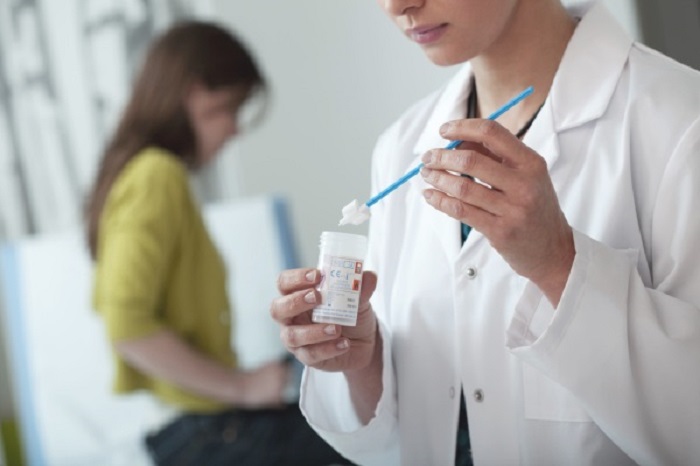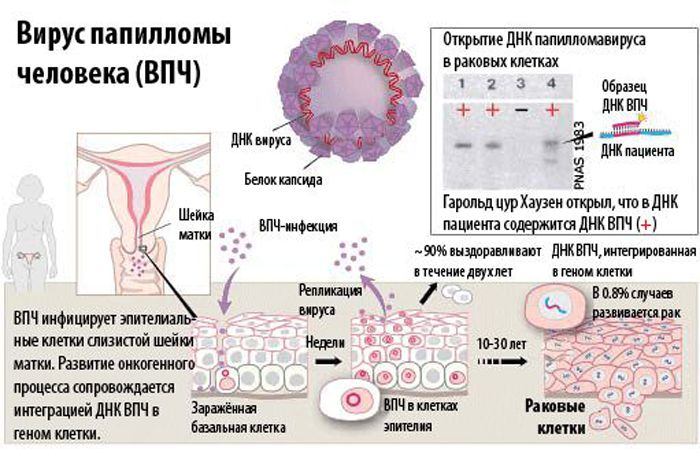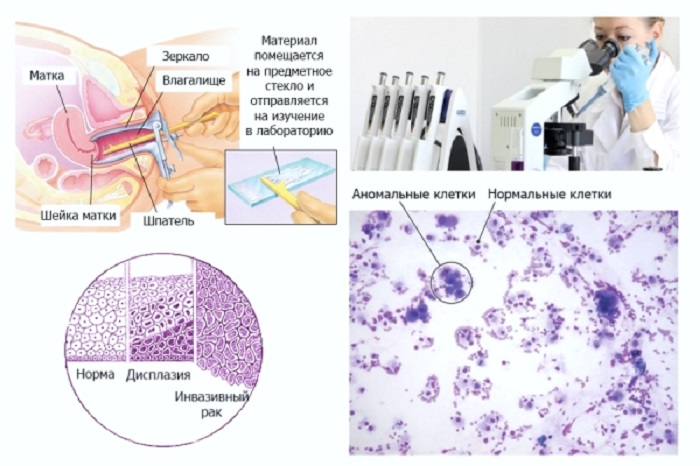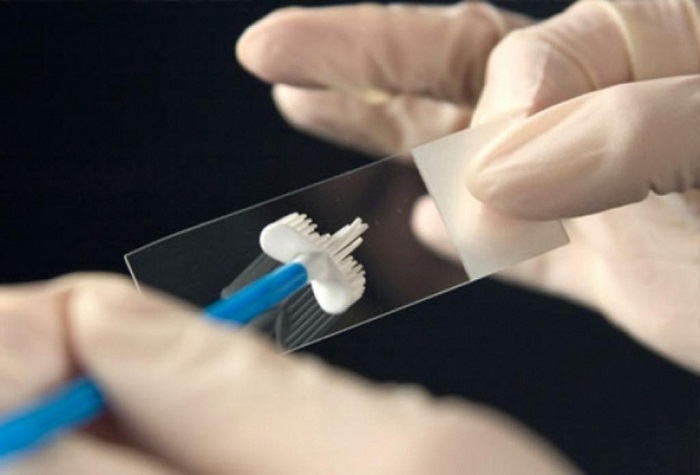Studies say that about 70% of the inhabitants of the earth are carriers of the papilloma virus. More than 170 HPV strains have been studied. Over the past 10 years, the frequency of infections has increased 10 times.
If not diagnosed in time, the disease can lead to cancer of the cervix and rectum. A timely swab allows you to identify the disease at an early stage and prevent serious complications.

Содержание:
Human papillomavirus smear: what is it?
An HPV test is a swab taken from the cervical canal. According to the results of the study, the condition of the tissues that partially cover the cervix is assessed. The analysis is of great practical value for women, as it reveals dysplasia in the early stages of its manifestation.
The regularity of the examination helps to control the level of risk of developing dysplasia and establish appropriate treatment depending on the identified indicators. Also, the analysis helps to select a specific therapy for the elimination of altered tissues. This approach prevents the risk of developing cervical cancer.

Preparing for Human Papillomavirus Testing in Women
A smear should be taken immediately after the end of the menstrual cycle (literally in the first 1-3 days). Before visiting a specialist’s office, a woman must:
- for a few days, stop using any medications in the form of vaginal tablets, sprays and suppositories;
- do not urinate;
- do not have sexual intercourse for 3 days before the analysis;
- do not douche immediately before the procedure.
How is the test for papillomavirus from the cervix
To identify HPV and determine its strain, a smear is used from the cervix, vagina, cervical canal and the area of accumulation of pathological formations. The most common are 2 types of gynecological examinations:
- Polymer chain reaction (PCR analysis). The material is taken for cytology, further examined in more detail. PCR gives more accurate results, as it additionally determines the ability of the strain to provoke oncogenesis. The doctor exposes the cervix with the help of disposable forceps and with a special brush makes a scraping from the mucous membrane of its surface. The resulting material is placed on a glass surface or in a sterile container.
- Digen test . This analysis allows you to get more reliable results due to the high sensitivity of the drugs used. Viral load and strain type are determined fairly quickly and accurately. In addition, the digest test detects HPV of low and high oncogenic risk. The mucous secretions on the surface of the cervix are examined.
Unpleasant sensations, like the procedure itself, last no more than 2 seconds. The material obtained during the manipulation is placed in a special liquid that seals it, and delivered to the laboratory for a thorough study. The results are available within a few hours. See also material on the topic: HPV type 16, quantitative analysis, decoding .

How reliable are the results
The results on the HCV with the correct analysis and the appropriate preparation of the woman for this procedure are always reliable. A repeat procedure is not required in this case.
If, however, the patient insists on an additional analysis, then it can be repeated after 2-3 months after receiving the first result. If the study is carried out earlier, you can get a false positive result.
The accuracy of the result may be impaired by damage to the collected material or insufficient sterility of the materials used in the analysis. In order to maximize the reliability of the research result for a specific task, you need to use your own type of PCR.
A qualitative method is used to refute or confirm the presence of a virus in the body. The genotyping technique determines the type of infection, and also determines the remaining or newly appeared foreign DNA.
An integrated or combined method is used for PCR for the presence of HPV of high oncogenic risk. Quantitative analysis is considered more informative, as it reveals, among other things, the severity.
What to do after detecting the papilloma virus?
When you receive a positive HPV test result, you should not panic. It is important to fully comply with the recommendations of the doctor and act strictly according to his instructions.
The specialist approaches each patient individually, depending on the parameters of the blood test and cytological scraping.
For some women, the doctor recommends re-diagnosis by taking a Pap test in a year, and for others, he will give a referral for a biopsy and colposcopy.
Important! The tissues of the reproductive organs do not give a 100% guarantee of the presence of the virus in the body. A smear only confirms the symptoms of its presence, since dysplasia manifests itself as a complication of uncontrolled division of the papillomavirus.
Strains of the virus can be transmitted sexually, so the patient should notify her partner about this when they are detected.
A man must also pass a similar analysis to exclude infection, and if an infection is present, undergo appropriate treatment.

Where can I do a PCR analysis?
A PCR smear can be taken at any medical institution that has the appropriate license to carry out such manipulations.
As a rule, this may be a public or private clinic that provides laboratory diagnostic services for urogenital infections. Such institutions always have the appropriate equipment, test systems and reagents in stock.
Depending on the urgency of the required results, tests can be taken by making an appointment with a specialist (usually free of charge), or you can take an urgent test for a certain amount.
Regardless of the urgency of the procedure, the results of the analyzes can be ready no earlier than 2-3 hours after taking the material for research.
For convenience, it is best to contact the clinic at the place of registration. In this case, it will be possible to avoid an additional registration procedure and generally reduce the time.
If a woman conducts an annual examination and testing for HPV purely for preventive purposes, then there is no point in rushing with the results.
A smear for HPV should be taken by all, without exception, women who have reached puberty, at least once every 3 years. If you suspect an infection in the body with tests, you need to hurry.
For the reliability of the results, the patient must know how to prepare for the procedure, where it can be carried out and what to do when a positive result is obtained.







